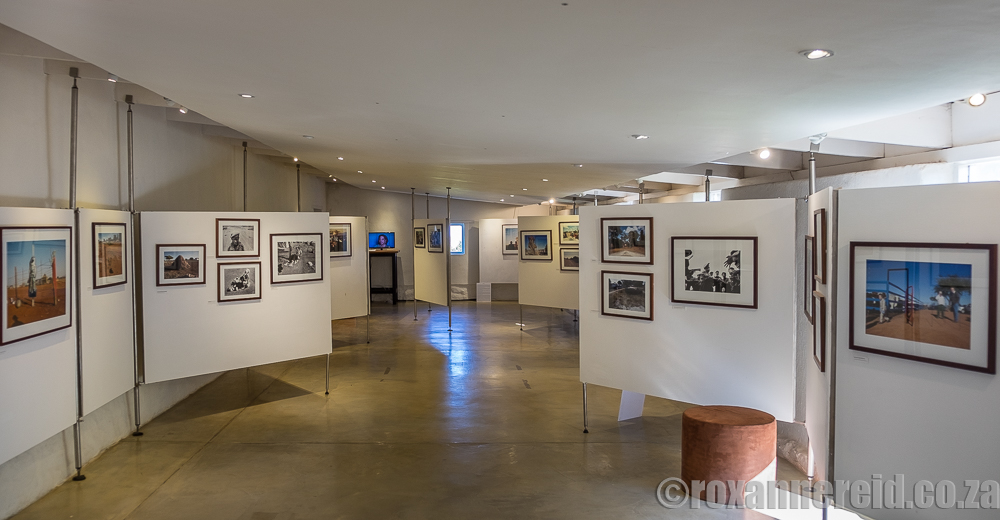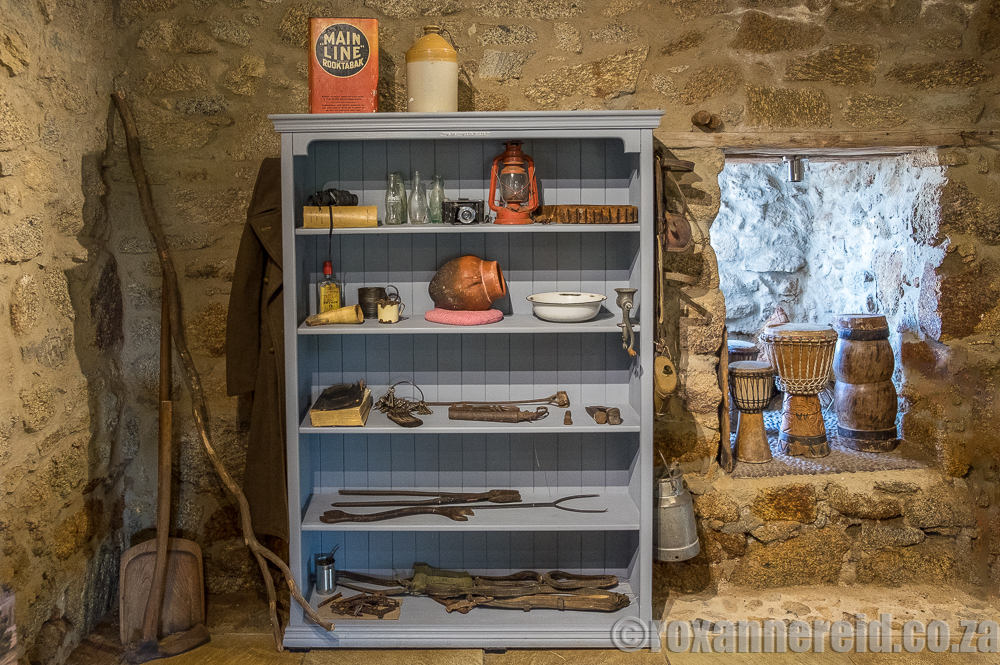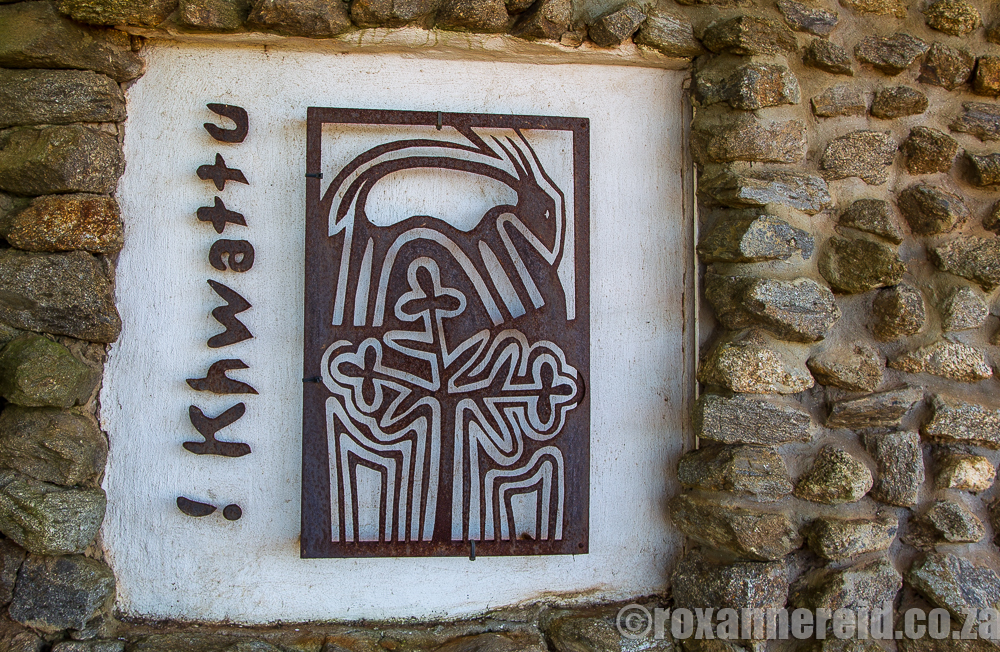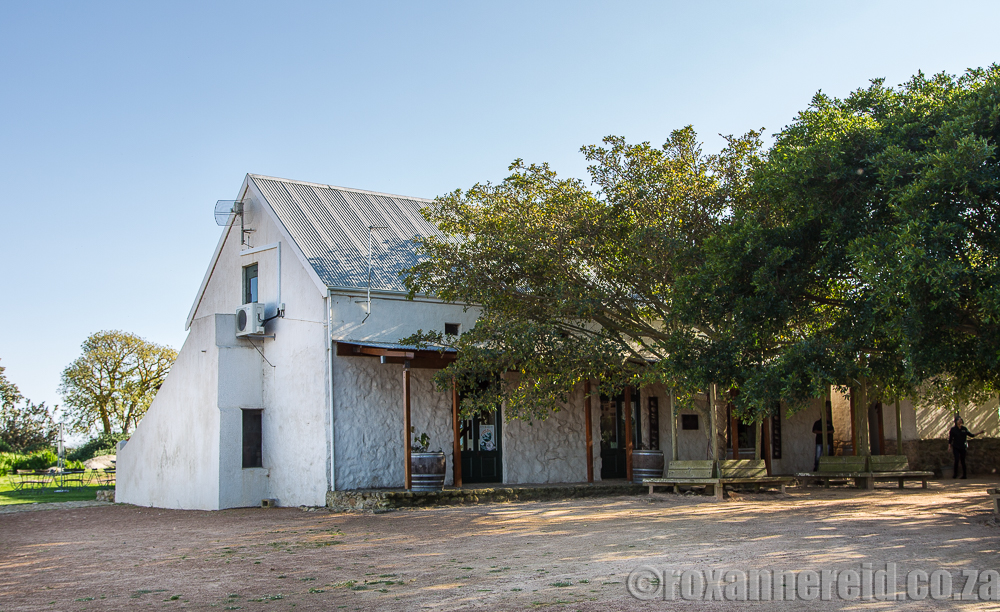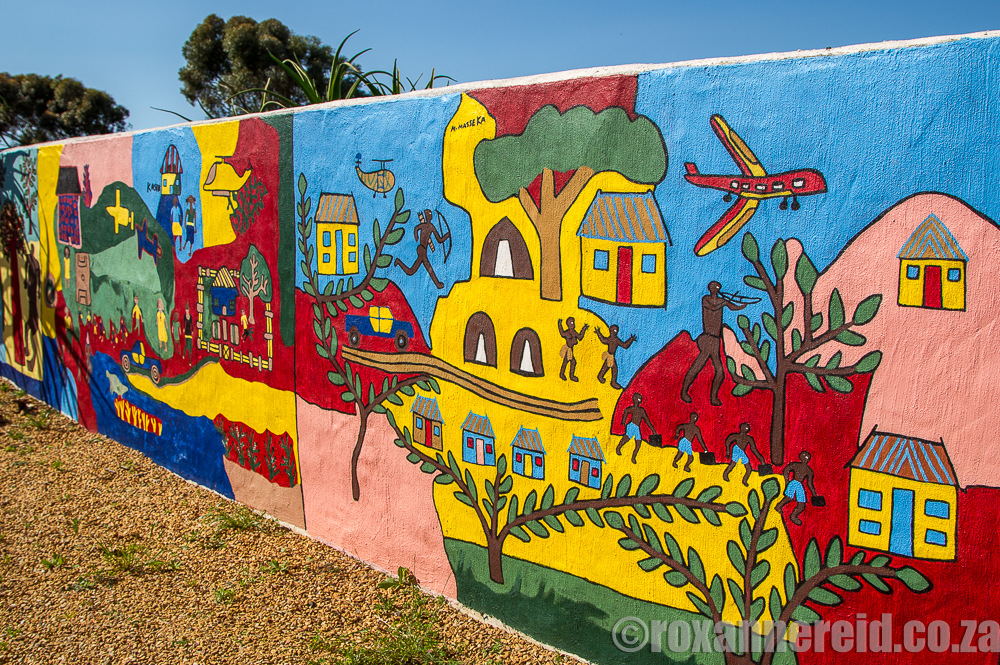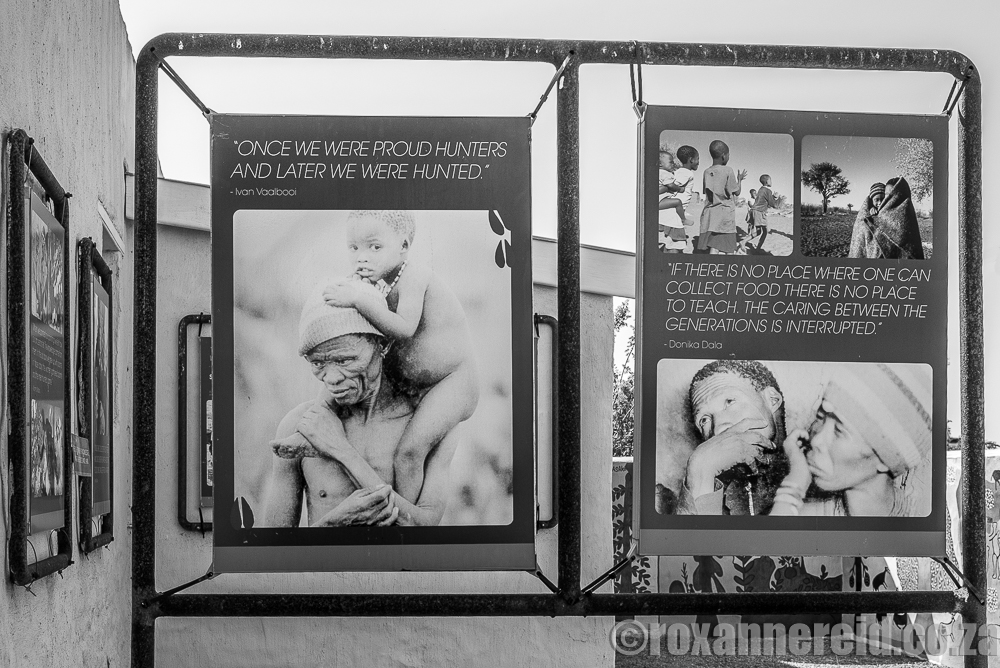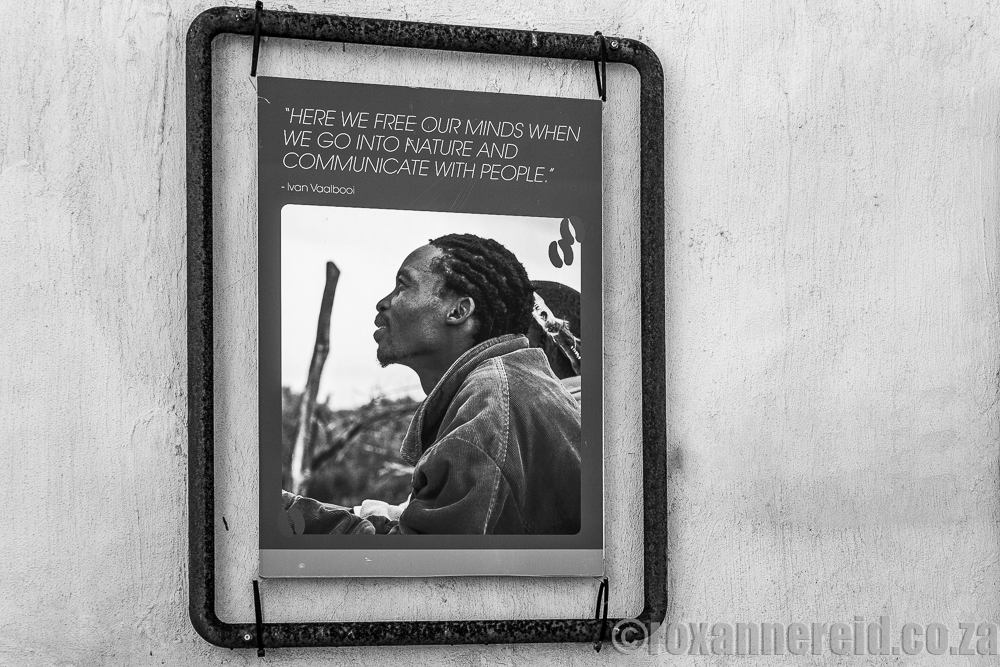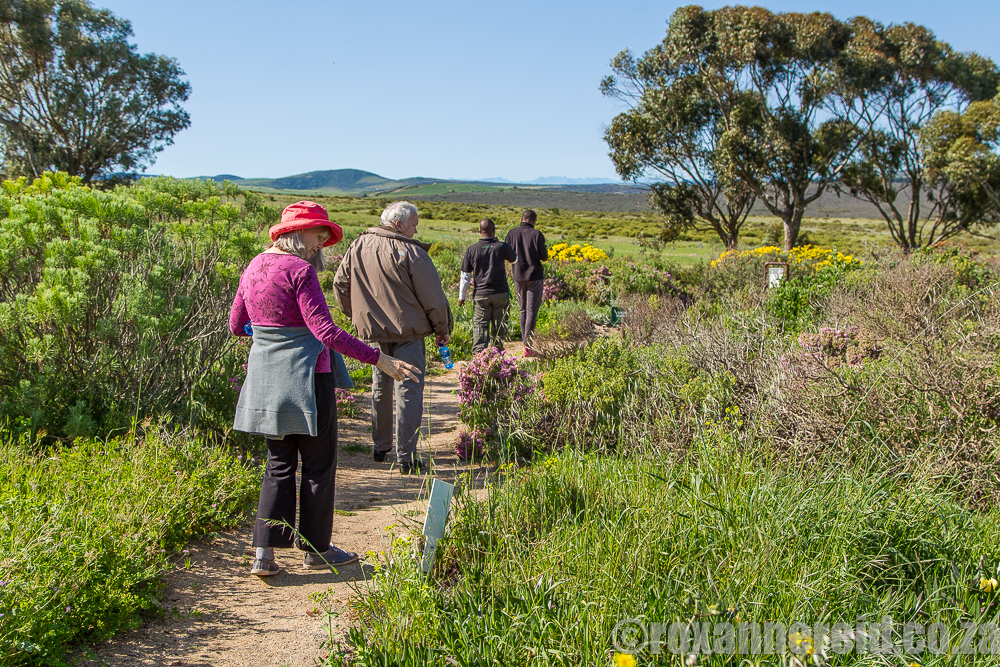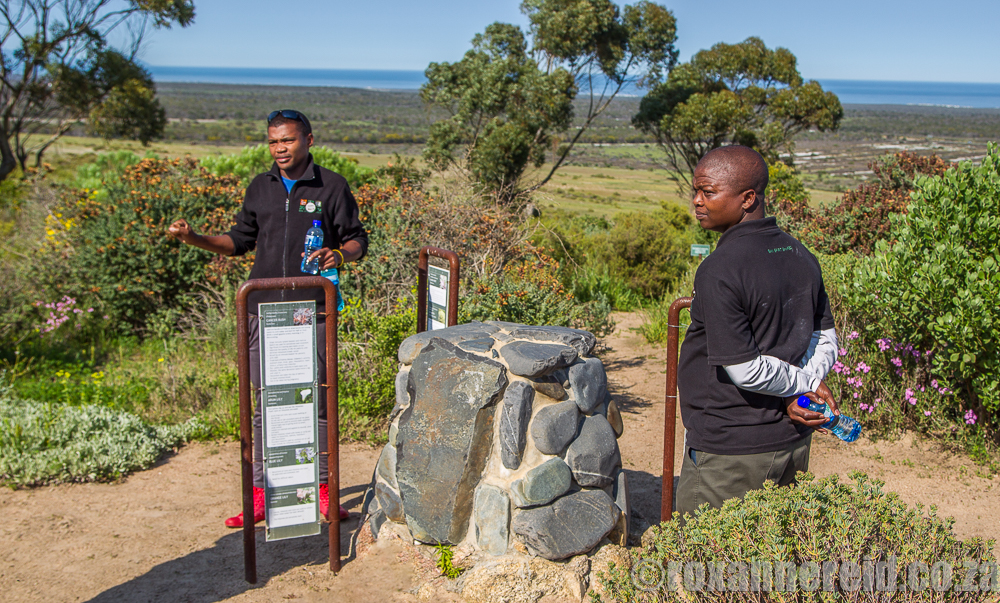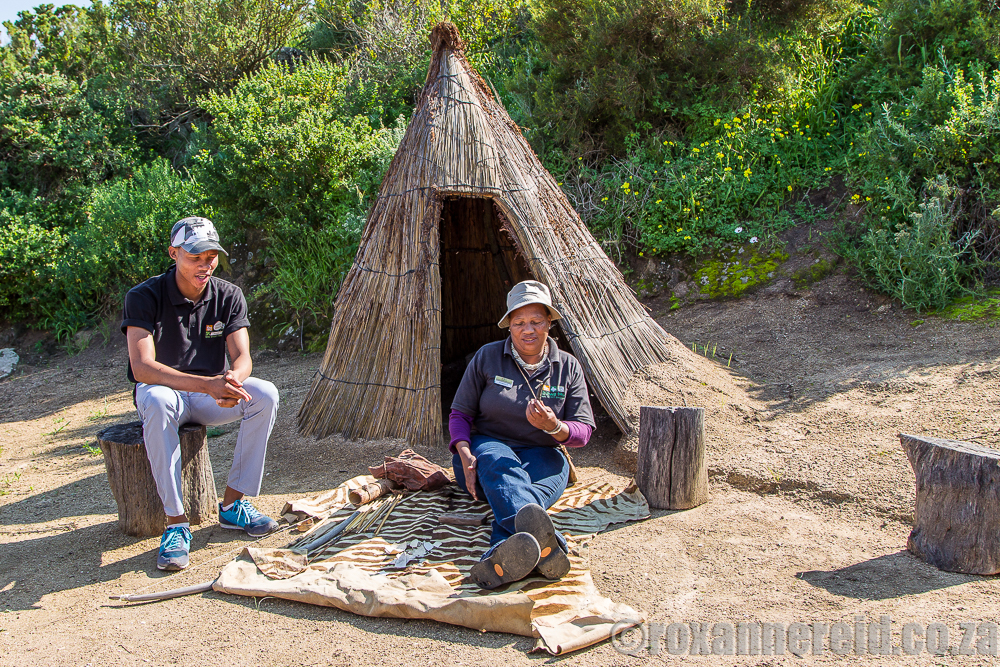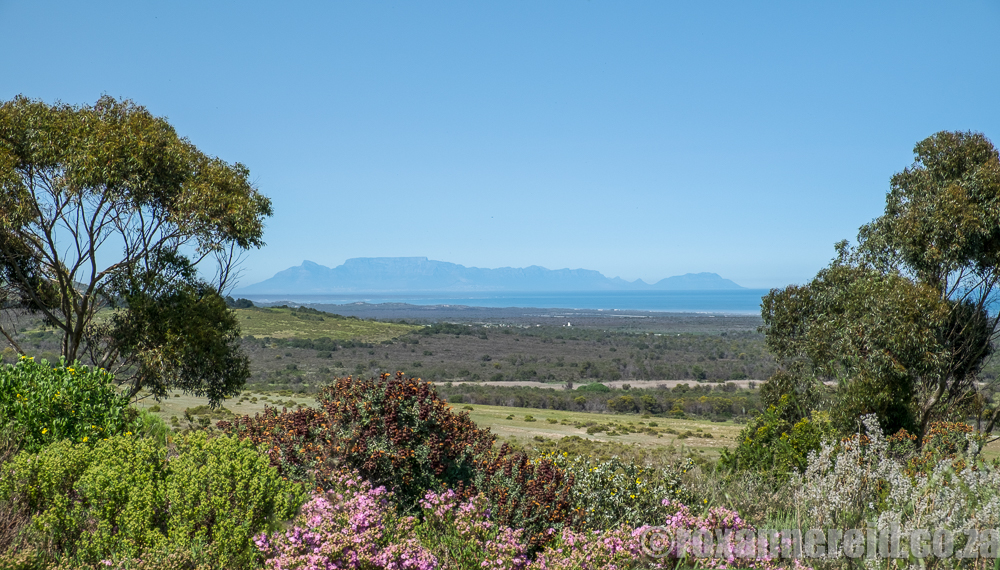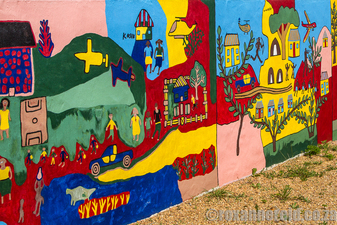
By Roxanne Reid
The San have inhabited Africa for thousands of years but modern ‘civilisation’ hasn’t treated them kindly. Now there’s a Fair Trade Tourism project that trains them in tourism and restores their cultural heritage. Visit !Khwa ttu to learn about the San near Yzerfontein and have some fun on the West Coast, just an hour’s drive from Cape Town.
The San have inhabited Africa for thousands of years but modern ‘civilisation’ hasn’t treated them kindly. Now there’s a Fair Trade Tourism project that trains them in tourism and restores their cultural heritage. Visit !Khwa ttu to learn about the San near Yzerfontein and have some fun on the West Coast, just an hour’s drive from Cape Town.
Photo exhibition in the gallery
A Namibian San family sits outside their grass hut, dad in a Vote Swapo T-shirt, squatting in a way that only people with skinny thighs can do. Mom has a baby on her on back and reaches out to touch the man’s head in a gesture of affection. A pair of old shoes, a galvanised bucket, a hunting bow and a skinny hunting dog lie in the sand, the family’s meagre possessions.
This photo is part of an exhibition telling the story of the modern-day San over the past 30 years.
A Namibian San family sits outside their grass hut, dad in a Vote Swapo T-shirt, squatting in a way that only people with skinny thighs can do. Mom has a baby on her on back and reaches out to touch the man’s head in a gesture of affection. A pair of old shoes, a galvanised bucket, a hunting bow and a skinny hunting dog lie in the sand, the family’s meagre possessions.
This photo is part of an exhibition telling the story of the modern-day San over the past 30 years.
Another photo shows a naked toddler in the foreground with a military helicopter in the distance. Or an older child grins while playing a homemade guitar, surrounded by sand and dead trees. A man uses his digging stick to find edible tubers. An old couple sits on a donkey cart, their eyes ineffably sad.
This is the reality of most San – Africa’s First People – across southern Africa from Namibia to Botswana and South Africa. Their days of freely roaming the veld to hunt and gather plants are long gone. In their place have come poverty, discrimination and marginalisation.
This is the reality of most San – Africa’s First People – across southern Africa from Namibia to Botswana and South Africa. Their days of freely roaming the veld to hunt and gather plants are long gone. In their place have come poverty, discrimination and marginalisation.
In one corner of the gallery is a display of ‘Things that changed their lives’. The objects are illuminating, given that much of the change has not been positive – a bible, a bunch of keys, a bottle of alcohol, a camera, a gun.
!Khwa ttu San on the West Coast Way’s Culture Route is trying to banish poverty and marginalisation by giving San people from around southern Africa the chance to come and learn more about their heritage and culture. The hope is that they return to their communities with skills they can use in tourism.
You could say that the San are celebrating the past here in the present so that they can have a better future, on their own terms. The days of others appropriating the beguiling San culture without any direct benefit to the San themselves must end.
You could say that the San are celebrating the past here in the present so that they can have a better future, on their own terms. The days of others appropriating the beguiling San culture without any direct benefit to the San themselves must end.
The plant walk
We chose to go on a plant walk to learn about the medicinal and food value of various plants that grow here. You can also go on a drive through some of !Khwa ttu’s 850ha to see eland, zebra and springbok and get insight into the San’s tracking and hunting methods.
We chose to go on a plant walk to learn about the medicinal and food value of various plants that grow here. You can also go on a drive through some of !Khwa ttu’s 850ha to see eland, zebra and springbok and get insight into the San’s tracking and hunting methods.
We walked with Matios from Platfontein near Kimberley and Kasiso from Botswana, both trainees nearing the end of their time at !Khwa ttu. We began at a vibrant wall of paintings depicting life from the olden days to modern times – San art brought bang up to date. A series of posters traced a similar theme, beginning with the early days of freedom on the veld, when they would hunt for the pot and get water through reed straws.
The next posters depicted farm life during ‘times of dispossession and marginalisation’, when the San wore modern clothes and had nowhere to hunt. A powerful quote said: ‘Once we were proud hunters and later we were hunted.’
The final posters depicted a time of revitalisation, participation and education – as exemplified by !Khwa ttu, which brings youngsters here to teach them the traditional ways of their forefathers. ‘We can’t go back to the old places and ways, but at least we now have a place to tell our story,’ one man said. ‘Here we free our minds when we go into nature and communicate with people,’ said another.
Matios and Kasiso pointed out some of the plants and their uses – wild mint for chest problems, buchu for stomach ailments or as a perfume, wild dagga for flu or headache. The gum of the khadi root is an antiseptic while the roots are used to make beer. Aloe, snake berry, sour fig, they know them all.
The village
Our slow walk led us around in a wide arc and ended at the San ‘village’ with a fire at the centre, where people tell stories and celebrate a good hunt by communing with the ancestors.
Donika, also from Platfontein, showed us how to make an ostrich shell necklace, chipping pieces of shell, then filing them on a stone to a round shape. She used a long stick as a drill to make a hole through the centre before threading them together.
For authenticity she spoke in her click language, with Phillipus from Namibia translating. The San population today is around 130 000 and they speak 13 different languages. There are three main families of San languages and only those from the same root group can understand each other. For the others, the common language is English.
Our slow walk led us around in a wide arc and ended at the San ‘village’ with a fire at the centre, where people tell stories and celebrate a good hunt by communing with the ancestors.
Donika, also from Platfontein, showed us how to make an ostrich shell necklace, chipping pieces of shell, then filing them on a stone to a round shape. She used a long stick as a drill to make a hole through the centre before threading them together.
For authenticity she spoke in her click language, with Phillipus from Namibia translating. The San population today is around 130 000 and they speak 13 different languages. There are three main families of San languages and only those from the same root group can understand each other. For the others, the common language is English.
Phillipus told us that a man in love will make a love bow. ‘When he sees the one he loves, he shoots her in the bum. If she doesn’t like him back she breaks the arrow. If she does, she holds it to her heart,’ he said.
Her family will give him three tasks. The first is to make a fire by rubbing sticks together. It’s harder than you’d think and Phillipus got out of breath demonstrating the technique. The second task is to hunt and kill an eland, the third to make a hut – all practical tests to see if he’s worthy and can look after her and her family.
Her family will give him three tasks. The first is to make a fire by rubbing sticks together. It’s harder than you’d think and Phillipus got out of breath demonstrating the technique. The second task is to hunt and kill an eland, the third to make a hut – all practical tests to see if he’s worthy and can look after her and her family.
Responsible tourism
!Khwa ttu educates and trains up to 30 San people every year, and the benefits filter down to some 150 dependents from remote communities in Botswana, Namibia and South Africa. The trainees live at !Khwa ttu for about seven months, expanding their knowledge of San culture and heritage. They also learn to use it in modern-day hospitality and tourism by getting hands-on experience in the restaurant and on the tours.
!Khwa ttu educates and trains up to 30 San people every year, and the benefits filter down to some 150 dependents from remote communities in Botswana, Namibia and South Africa. The trainees live at !Khwa ttu for about seven months, expanding their knowledge of San culture and heritage. They also learn to use it in modern-day hospitality and tourism by getting hands-on experience in the restaurant and on the tours.
!Khwa ttu’s non-profit status and Fair Trade Tourism accreditation means that the San share in the income and participate in decisions that concern them. It also means that !Khwa ttu respects human rights, culture and environment, and is sustainable.
I love supporting such responsible tourism projects. Apart from enjoying the tours and the gallery, you can go hiking or mountain biking, stay over in the cottages or enjoy a meal in the restaurant, knowing that your money is being put to good use.
Did you find the article interesting? Pin this image!
I love supporting such responsible tourism projects. Apart from enjoying the tours and the gallery, you can go hiking or mountain biking, stay over in the cottages or enjoy a meal in the restaurant, knowing that your money is being put to good use.
Did you find the article interesting? Pin this image!
You may also enjoy
10 things you may not know about Yzerfontein
Copyright © Roxanne Reid - No words or photographs on this site may be used without permission from roxannereid.co.za
10 things you may not know about Yzerfontein
Copyright © Roxanne Reid - No words or photographs on this site may be used without permission from roxannereid.co.za
